Hello and welcome again! I just got done pounding out 2500 words for an upcoming anthology so I’m starting this Newsletter later than I usually do. And so I’d like to say that it’ll be much shorter and more to the point than they typically are. But who am I kidding? It’s going to be exactly as long and involved as it usually is. So get comfortable, grab yourself a snack if you’re so inclined, and we’ll begin. And as I begin to lose coherence as we get deeper and deeper into the flow, well, you’ll understand why.
I should probably begin by acknowledging that a couple of different projects that I worked on were nominated for this years’ Eisner Awards. In particular, MOON KNIGHT: BLACK, WHITE AND BLOOD #3 is up for best single issue, and credited solely to me. Which isn’t really the case. Set aside that any value that issue has is due to the talented creators who worked on the stories in that issue (which includes Erica Shultz, David Lopez, Jim Zub, Djibril Morrisette-Phan, Ann Nocenti and Stefano Raffaele), but at least one of those stories was directly edited by my assistant editor Martin Biro rather than myself. And the always-involved Annalise Bissa was a presence on all of the material as well. I understand that credit was given to me in order to boil things down to just one simple name, but the reality is far different.
And if I’m being honest, I’m not certain what it was about that specific issue that struck such a chord with the judges. Marvel didn’t submit it for consideration in the category (though we did submit issue #4’s story “Good Morning” by Christopher Cantwell and Alex Lins, which is up in the best short story category) and I don’t know that that particular issue was markedly better or worse than the other three. But hey, if it struck a chord with somebody, if people liked it, I’ll take the win! So vote early and vote often!
Right! No time to waste, right on into this week’s batch of reader questions!
Jess Nevins
One thing that's always fascinated me is the editor-writer interaction. So, let's say there's a trend in popular culture that is resonating with audiences but which isn't yet appearing in comic scripts. Would you suggest to a writer that they include this trend in a script? I suppose this depends on how heavy-handed individual editors get, but whenever I see a pop culture trend or trope or motif that is also appearing in the comics, I always wonder if it's parallel development or something more organized than that. (For example: let's say overt patriotism becomes a trend in the movies as well as in the comics. Coincidence or coordination or something else?)
Well, often, Jess, aspects of popular culture that become a trend end up in the pages of comic books by simple osmosis. Our creators are just as much fans of stuff as we are, and they often don’t need any prompting from us to make their characters twerk or whatever it is the kids are doing these days. If there was something that I thought might make a positive difference and attract readers, then I’d certainly mention it to my creators. But that goes for simple storytelling approaches and the like (as we saw in last week’s Story post) as much as any particular trend. Different editors, though, are going to be interested in different things, so somebody else might act on some trend that was meaningless to cave-dwelling me.
Chris Sutcliffe
You mention Dan Slott a lot in this issue, so I thought I'd throw out a Slott-based question. I recently watched his episode of 616, which also features yourself. The documentary shows that he is often late turning in his writing; I think you say as much at the end of the episode.
I appreciate that a lot of this is played up for the documentary, and I know that his heavy workload is a key reason why things might be late, but I'm interested to know what strengths does Dan have (or any other similar creative) that makes up for their lack of punctuality.
I know Neil Gaiman talks about three qualities of a creative -- nice to work with, can deliver great work, can deliver work on time -- and the importance to have at least two of these. Is it as simple as Slott being both nice to work with and a very good writer?
Well, first off, Chris, it’s worth understanding that the depiction of events in that 616 documentary aren’t entirely, well, documentarian. For instance, that isn’t Dan’s office he’s seen working in throughout it, it’s a set, and the timeline of events has been edited and compressed and mixed around for effect and impact. Point being, Dan’s punctuality or lack thereof has been exaggerated for effect—as can be easily ascertained by noting the number of comics that he writes every month and which come out without fail. Beyond that, Dan has proven to be an imaginative and inventive writer over the years, and he’s certainly not getting assignments at that level because he’s nice to work with —nobody at that level is there because they’re punctual and pleasant. At the end of the day, quality work trumps everything else in that regard.
Leigh Hunt
Hey Tom, genuinely not trying to be snarky but your "spiel that I made to the Marvel editorial team in the course of the last week" has three typos/auto-corrects in it. Is it important as an editor to be perfect at all times or not? Do you think writers would think less of an editor if they made spelling/grammar mistakes?
Well, Leigh, that spiel wasn’t really intended for print at all. Rather, it was made over an internal Marvel Slack channel. It was only afterwards that I thought it might be a thing of interest to this readership, and so copied it over. Now, sure, it’s always best for everything presented to be as cleaned up as possible. By that same token, as you’ve no doubt seen in this feature on occasion, when I’m typing frantically (as I tend to do a lot during the work day) my fingers have a tendency to screw up basic words. The is more often teh, and To Do is routinely T oDo, and so forth. That’s just a part of being human, and if that makes you or anyone else think less of me as a result, well, that’s the way the chips fall. Everybody makes mistakes, every script ever submitted has a typo or a grammar mistake buried in it somewhere, as does every comic book ever printed. Until A.I. is doing all of the work (and maybe even after that if it’s pulling its sampling from stuff that I’ve written) there are going to be errors and mishaps and mistakes. But it’s the content of the message that I think is the most important, and as long as that comes across, I can live with a few foul-ups.
JV
I wonder if part of the backlash to one more day is the fact that Spidey 'lost' to Mephisto. Would it be better accepted if the marriage was erased but somehow we also showed how Mephisto did not get what he wanted? or some form of comeuppance?
The Nick Spencer run seem to imply this (how Spider-Girl in the future thwarts Mephisto) but never followed up on it - was this a seed to a future story to come
Maybe it would, JV, but I don’t think so. One of the things that I’ve learned in my time in this industry is that there’s often a great deal of difference between what reader say and what they do. And when they’re upset about something, they’ll seize onto any available talking point that they feel gives them the high ground to argue back at the events that have transpired. All of which is to say that if we’d used some other mechanism to separate Peter and Mary Jane rather than Mephisto, I expect that most of the same people would still be upset about it. It’s the dissolution of that relationship that’s the crux of their problem, for all that they very reasonably sometimes try to chalk the whole thing up to the execution of the story. Some of them might, sure—but then, others might be equally unhappy about whatever different methodology we’d used.
Mortimer Q. Forbush
What is your point-of-view regarding how much artists should stay "on-model"? Does Marvel have any rough guidelines? Or is it on case-by-case model. While I tend to value consistency, I also really love some design evolutions like "spaghetti webbing."
PS: As a diehard FF fan: do you prefer OG short Thing, or a hulking Thing that seems to be the new standard?
More often than not, Mortimer, this usually comes down to a judgment call. You mention spaghetti webbing, but that was hardly the only difference in Todd McFarlane’s interpretation of Peter Parker and Spider-Man from the accepted depictions of those characters. I know it was bothersome to John Romita at the time, as John was in part responsible for maintaining a consistent look for licensing. But there’s no arguing that Todd’s version of Spider-Man became the far more popular version of that period—to the point where everybody else started making the eyepieces larger and making the webbing spaghettier and adding more dense web patterns to the costume and so forth. So it can pay to be flexible. For years, the chain mail on Captain America’s costume was sort of partially faked in, until John Cassaday decided to regularly draw each and every link of it. And then that became the base design. So these things all evolve over time. Sometimes, you may need to pull them a little bit back towards the traditional vintage look if they go too far. And sometimes, certain artists just don’t have an affinity for certain designs. But flexibility is always worth maintaining. As for the Thing, in my head he’s always Jack Kirby-sized, but he’s grown progressively larger and larger over the years. Certainly even John Buscema’s Thing was larger than Kirby’s, and once we got to the Jim Lee era, he was pretty massive. To a certain degree, that’s what the audience of today expects from the character (and from the Hulk, who has similarly ballooned in size.)
Stephen
I’m curious if there are any writer’s that you’re currently approaching that you’ve wanted to work with that were to busy that may have some time now due to the Hollywood writers’ strike. I’m sure you can’t give names if you are, but I was wondering if the publishing side looks at this ad an opportunity
I don’t know that there are any names that immediately come to mind, Stephen. But I’m sure that some writers who are on strike will inevitably wind up writing some projects for us depending upon how long the strike goes on. That’s been the case in the past at any rate. So it does represent an opportunity, but one whose situation isn’t stable.
Maxpocalypse
Regarding that Alex Ross cover for FF 700: why are the heroes behind Doom all dressed in their “classic” costumes? Is it because they will appear like that in the story, or because Alex just produced the he art this way, regardless of the issue’s content?
You can now go out to your local retailer and pick up your own copy of FANTASTIC FOUR #700, Max, and find out for yourself! But I’ll tell you that it isn’t simply because Alex felt like drawing them that way.
MrJWThompson
Which brings me to Ultimate Wolverine Vs Hulk. The first two issues came out on schedule, and were amazing! But then nothing for 3 years. Then when those last four issues came out, they were (in my opinion) pretty terrible. I know Damon Lindelof was working on Lost at the time, but was there any behind the scenes information you could share on why it took so long? Was that the original story that was pitched? Was Lindelof sorta forced to come back to finish it? Or any other knowledge you have on that subject?
I didn’t work on any of those books directly, JW, so I have only limited knowledge as to how it all went down. But as best as I know, the story didn’t change at all along the way despite the long gap between issues. And that was as simple as Damon getting extremely busy again at a certain point and not being able to focus on completing the later installments. That’s the downside of reaching out to those striking writers as Stepeh was asking about a couple of questions back: at some point, the strike is going to end and they’re going to go back to work, and they’re going to be way behind schedule when that happens—to the point where any comic book projects that they’ve taken on are going to inevitably get back-burnered. I don’t think that’s what happened to Lindelof, but the situation was analogous to that, in that a lot more work that was more central to his career and better paying all had to be done, and ULTIMATE WOLVERINE VS. HULK was put to the side accordingly.
Nacho Teso
So, Marvel released an spoiler for the ending of an Spider-Man story. Again. The end of Wells and Romita current arc is out in the wild as it happened with End of Spider-Verse a month or so ago.
I don't want to talk about the spoilers or nothing like that. But, Tom, can you help me understand why does Marvel do this? Why spoil a story? From a reader perspective, I simply don't get it. The readers don't get surprised, the creators don't get their stories to live as intended and I can't see one good outcome from this decision. The only thing I see is, basically, anger and disappointment.
Who chooses to do this? And why? Does it come from the editor? The creative team? The marketing department? Is there any single benefit? I'm usually less invested in a story when this happens, and I see that as the usual reaction.
Well as you can imagine, Nacho, we don’t love it when a story is spoiled ahead of time either. In this instance, we had coverage all set with Entertainment Weekly that was slated to be dropped when the issue came out. The negotiation for that coverage guaranteed them the exclusive to the story. So when somebody took a few blurry photos with their phone and posted them publicly weeks ahead of time, we were put into a corner. At that point, we really didn’t have much of a choice other than to go ahead and authorize EW to release their story immediately. We could have waited, but then by the time their piece dropped along with the book, it would have been old news and not gotten them the eyeballs and traffic it was intended to. So that choice was made by us, by Marvel publishing, in the service of not burning our partner in this announcement and thus making it impossible to get similar coverage in the future. Again, we don’t love having to do this—but given the situation, it was about the only honorable avenue left to us.
Steve Replogle
Tom, thanks as usual for your thoughtful reflections and BTS info about comics. As someone who has no references to Korean television shows, could you cite a comic series or two that might correlate with BLOODY GAME?
I don’t know that there is a comic series that truly correlates to BLOODY GAME, Steve, as it’s a totally different medium and a totally different style of story that’s unfolding in it. The best I can do is to give you something like this midseason trailer for the first series that shows a bit of how the first half of that initial series played out. Now, mind you, it contains some spoilers for that first series, so if you’re thinking about watching it, you’ll want to proceed at your own risk. In terms of media, I’ve been consistently saying that what the show really is is PARASITE the game show.
Jeff Ryan
It used to be stories that fundamentally changed a character's status quo -- Hey I've got a great Spider-Man idea, where he dies at the end! And all his monthly books just stop, forever! -- just wouldn't happen. They're more encouraged now; something like Cosmic Ghost Rider is ostensibly a Punisher story, one that it would be really hard to sell if someone was expecting Frank Castle in an alley shooting drug dealers.
Are there any stories from your early days that were shut down for being too much of a shake-up at the time, but which would work much better nowadays? (Thinking of Claremont's idea to have Wolverine turn evil for a year, which was absolutely off the table in the 1980s, but 20 years later became Enemy of the State.)
I don’t know how much I agree with your take on this, Jeff, at least as regards Cosmic Ghost Rider. The thing about that character is that, as an alternate future version, he leaves the regular Punisher untouched and able to go about his stories without any need for a change. That doesn’t really amount to a status quo change, at least in my eyes. It’s closer to something like Cable. But with that, I can’t think of any particular story pitches that were shot down in the past that might work just fine today. We did talk about Bob Budiansky’s idea for “The Many Worlds of Spider-Man” for the 1995 Spidey Annuals, which was very much like a precursor to something like Spider-Verse. And I’m sure there are others. The thing is, it’s often as much about the timing being right and the creators having the right pitch that makes a story of this sort succeed or fail. I think I’ve mentioned that, before Ed Brubaker brought Bucky back in the pages of CAPTAIN AMERICA, a previous creative team wanted to do the same thing and I fought tooth and claw to prevent it from happening. The same thing happened later with Gwen Stacy, who still hasn’t actually come back apart from alternate versions like Spider-Gwen, so maybe that’s one. Or maybe it still wouldn’t work, who can say?
Steve McSheffrey
Are the Scarlet Witch's probability altering powers gone or is it just the choice of most recent writers never to use them? 'Cause I gotta say there was a scene in Avengers #1 (awesome, BTW. Unless I truly loathe a character starring in a book McKay's name on a cover guarantees I get it) where it would have made more sense to turn to a hex considering the control she had over them before they stopped being used. I do have to give kudos though to Wanda not just pulling a rabbit out of her hat and actually having to work on a spell. Her own book suffers from her being able to do any magic she needs to handle a situation with little effort, strain, or consequence.
To my recollection, Steve, Wanda’s hex power was folded into her general magic use as far back as Kurt and George’s AVENGERS run in 1998. I can’t specifically think of an occasion since then when she did so and it was specified as being a separate and different thing than what she usually does. As part of our efforts to simplify and straighten out a character who had become a bit muddy, Kurt had revealed that Wanda had been touched by Chthon since before her birth, so her hex was always empowered by those magicks. But glad that you liked AVENGERS #1!
Behind the Curtain
Hey, it’s another lost cover! This piece was done as part of a set of covers depicting the Fantastic Four throughout their publishing history as part of the celebration of the title’s return a couple of years ago. It was based on WHAT IF #11, the famous and bizarre “What If the Marvel Bullpen Had Become the Fantastic Four?” This new image was created by Mike and Laura Allred, who did a wonderful job with it. But at the eleventh hour, there was some question about whether we could or should use the liknesses of Stan Lee, Jack Kirby, Flo Steinberg and Sol Brodsky without their or their families’ consent, and so the whole thing became too much of a nightmare to manage, and the cover was spiked.
Pimp My Wednesday
A smaller week for new releases from us, but no less exciting!
First up is this FURY ANNIVERSARY SPECIAL commemorating sixty years of Marvel’s top soldier-turned-super-spy in all of his myriad forms. Al Ewing pairs with a quartet of great artists: Scot Eaton, Tom Reilly, Adam Kubert and Ramon Rosanas to tell a story that resonates through the ages and which brings both iterations of Nick Fury together for possibly the last time. Spiritually, this has a lot in common with Al’s other recent anniversary projects for ANT-MAN and THE WASP, though here everything is contained in a single issue package. And it turned out pretty great, with each of the artists steering into the aesthetic of the period that they were depicting.
This one’s a bit of a strange egg for us. DAREDEVIL & ECHO started life in the editorial office of Devin Lewis and Tom Groneman, but when some life stuff got in the way and they needed some help in managing some of their projects, Annalise Bissa picked up the baton as its editor. It’s an all-new adventure set in the present day by Taboo and B. Earl that uncovers a bit of shared past between Matt Murdock’s ancestor and Maya Lopez’s. And it’s all lovingly illustrated by Phil Noto, which is a big selling point in and of itself.
Meanwhile, the Eisner Award-nominated team of Christopher Cantwell and Alex Lins continue their strange noir science fiction supernatural murder mystery story in HELLCAT #3, edited by Martin Biro. Fun fact: this cover was originally commissioned for the first issue, but it wasn’t considered strong enough for a launch, and so we shifted it back here and replaced it with the cover that ran. but I still think I like this piece better, though the small logo wouldn’t have been a great thing on a first issue.
And in the digital realm of AVENGERS UNLIMITED, David Pepose and Ze Carlos’ six-part Avengers/Guardians of the Galaxy epic reaches its inevitable conclusion, as the two teams must work in tandem to tamp down the rage of an angry planet. See how they make out on the MARVEL UNLIITED service this week!
A Comic Book On Sale 20 Years Ago Today, May 21, 2003
Boy, it really couldn’t have been any other option besides this book this week, could it? We talked about MARVILLE in the past, how it was Marvel publisher Bill Jemas’ entry in the U-Decide promotional circus, and how it went from being a purported comedy series to one that pontificated about the nature of life in the universe across its six issue run. But there was a seventh issue of MARVILLE as well, only that one wasn’t about telling a story at all. To roll back events a little bit, one of the things that Bill had been doing increasingly over the course of the preceding year had been cancelling titles across the Marvel line that he didn’t care for. he was doing so based on his interpretation of quality, but the end result was that Marvel’s line had shrunk almost to the point where it could no longer cover the overhead costs for the operation. You needed to publish a certain number of titles every month in order to cover your operational nut, and at its lowest point, Marvel was down to something like 38 releases. (And half of those came from my editorial office.) So there was an immediate need to ramp up and launch some new projects. At the same time, Bill was steadily growing disenchanted with Joe Quesada and the editorial staff. He was stuck working with what he had to work with, but he’d occasionally be wistful about working with Bob Harras in his early days in the position. What Bill really wanted was a bunch of editors who thought the way he did. And he came up with a novel way of getting there. During this period, Project Greenlight was airing, which was a documentary series in which Matt Damon and Ben Affleck funded a bunch of young up and coming directors to allow them to make their first films. Inspired by this approach, Bill came up with the notion of doing the same sort of thing in comic books. He’d launch a new imprint that would accept open submissions from potential creators, who would have to provide a pitch and five pages of completed lettered and colored artwork as a proof of concept for their ideas. If they made the cut, marvel would pay them a relatively small flat fee to package their books. The idea was that Marvel would get a bunch of books that could be put out cheaply and without straining the reduced editorial staff, the creators would get an opportunity to be published by Marvel, and Bill would have the chance to mold these young creators and instill his values into them. The old name EPIC was resurrected for this effort, and Bill laid out his vision and requirements for the line in his final issue of MARVILLE. Which is a pretty good scam, getting prospective creators to have to buy your comic to get the instructions for how to submit theirs. The guidance given in this issue is snarky, self-aggrandizing, a bit nasty, and a bit contradictory. Very much like Bill himself.
In order to insure that Epic was well received in the marketplace by retailers, Bill arranged for a little bit of theater. The first Epic project, he decided, would be TROUBLE, a romance series by Mark Millar and Terry Dodson that would involve Peter Parker’s parents and his Aunt and Uncle during their teenage years, and which would reveal that Aunt May was actually Peter’s true mother all the time. I don’t remember how much of this idea came from Bill and how much from Joe Quesada, but it was presented to the public as a concept that Mark and Terry had brought to Marvel fait accompli, which is why it qualified for publication under the Epic banner. In reality, while they worked on it, it wasn’t their idea, at least not entirely, and they were both paid their usual Marvel page rates for their work on it rather than the smaller lump sum that the Epic creators would get. Epic was well named as it turned out, as it became a disaster of epic proportions. Bill seriously underestimated the number of submissions he would receive, and before long they began to litter the hallways, literally. There were thousands of them, and they were everywhere. What’s more, upon receiving the first batch of submissions, Bill grew cold on the whole process. he was convinced that the vision he’d so clearly laid out in MARVILLE #7 would result in a bunch of excellent projects that were just what he had in mind. But what he got was a lot of amateur material pitched by creators who weren’t quite yet ready for the big league—and whose sensibilities didn’t come close to mirroring Bill’s. In the end, Bill’s bosses stepped in and announced an all-hands-on-deck effort to clear out the backlog of unanswered material. The entirety of Marvel editorial spent about a week going through all of the assorted submissions and spot-reviewing them into one of three categories: hopeless, showing some promise, and something we might actually want to publish. The first two categories were sent back one of two rejection form letters declining their efforts. Not much made it into the third category. A scant few Epic projects were published: CRIMSON DYNAMO, a series that Bill had greenlit even before Epic had legitimately rolled out due to his interactions with writer John Jackson Miller, and a SLEEPWALKER project that was compressed down into a one-shot that had been pitched by Robert Kirkman. The fiasco of Epic was one of the things that pushed Bill towards the end of his time at Marvel.
A Comic I Worked On That Came Out On This Date
THE CREW #1 was published on May 21, 2003, and it was a bit of a weird project. As I mentioned in my MARVILLE #7 write-up, the company was facing a problem whereby we didn’t have enough titles in the pipeline to maintain our overhead. As a result, new ideas for projects were being approved relatively readily, though not without a whole bunch of tinkering with them. For the past several years, since the start of MARVEL KNIGHTS, Christopher Priest had been writing BLACK PANTHER, reimagining the character in a modern way and more or less crafting him into the interpretation that we recognize today. For all that, BLACK PANTHER was never a top selling book apart from perhaps at its launch. It struggled to find and keep an audience all the way through its run. Bill Jemas’ interpretation of why this was the case was pretty simple: the book wasn’t black enough, or the wrong kind of black. He felt that the series would do much better if the lead character was in a much more recognizable American urban setting. Trying to please his bosses and keep his job, Priest retooled the series with issue #50, introducing Kasper Cole, a shady police detective who came across the Panther’s discarded vibranium-laced costume and used it to try to get himself out of the difficulties he’d gotten himself into while dealing with bad guys. This was the “Panther with a gun” version of the character, and while it was interesting, it wasn’t really what Bill had in mind. So he cancelled the book. Priest at that point was looking for other assignments, other opportunities, and one of the things he pitched me was effectively Black Avengers. Now, Priest was far from the first person to spin some version of this idea at me, but I never liked it. For all that he would have handled such a series well I expect, an Avengers book whose identity was defined by its ethnicity fought against the concept of Earth’s Mightiest Heroes, at least in my estimation. So I never bit. But when the twin factors of BLACK PANTHER being cancelled and Marvel needing new books hit, I would up talking with Priest and suggesting that he take that basic concept and spin it into something new. In particular, I knew that Bill wasn’t wild about the execution on Bob Morales and Kyle Baker’s THE TRUTH, which largely came down to him not liking Baker’s more cartoony art style. So I saw an opportunity to create a team situation that might include a modern day successor to the Isaiah Bradley character, the Black Panther, Kasper Cole and whomever else we thought would be a good fit. Priest thought about it a while and came back with THE CREW, a series inspired in part by the film THREE KINGS. He picked up Jim Rhodes as a character to feature in the series (though he didn’t much want to use him in his War Machine guise) and he invented Josiah X, Isaiah Bradley’s grandson. He also brought back an obscure creation of his last seen in his already-old POWER MAN AND IRON FIST run, Junta. And he was interested in also involving Quicksilver, but I didn’t love his take on the character, and so steered him away from Pietro. Priest had a strong vision for THE CREW and how it should be packaged and marketed, something that Marvel had little interest in. For a hot minute, the series was going to be folded into the ill-fated Tsunami launch, but I was able to spend some coin and get Joe and Bill to relent, having to sacrifice HUMAN TORCH to the effort as a result since I couldn’t save both titles. And after its exclusion, it was something of a bastard child, little promoted, little noticed. It must be said as well that, for a book that contained a strong black perspective on the world, I was perhaps not the best editor, being among the whitest men in comics. I tried my best, but I don’t know that I was ever entirely simpatico with Priest’s vision, and so couldn’t advocate for it effectively enough in practice. THE CREW was illustrated by Joe Bennett, with whom Priest had worked previously, and their combination was a good one. But the series was dead on arrival, launched without any support or fanfare, and it was cancelled with issue #7 well ahead of any of the other Tsunami titles. I’m pretty sure that I needed to campaign to get issue #7 in order to finish the story, as six-part storylines were the name of the game at that point. And the series was never collected until years later, after the success of the first BLACK PANTHER film put all of Priest’s Panther-related material back onto shelves.
Monofocus
As a number of the series that I’ve been regularly watching wrapped up their current seasons and other shows haven’t yet begun theirs, I had a bit of a lull in my viewership. So I took advantage of this to take in LONGEST THIRD DATE on Netflix. It’s a documentary about a couple who have just begun to date one another and who decide to take an impromptu trip to Costa Rica over a long weekend for their third date because the flight rates are so low—little realizing that the COVID pandemic is about to hit. They wind up trapped in Costa Rica for more than three months, not speaking the language and unable to get home until the flight restrictions have lifted or are lessened. And, of course, they’re also trapped with one another for that period as well. It was a pretty fun film, even if you can guess most of the major beats ahead of time despite the fact that it’s all real life. That’s down to the editing structure, I’d imagine. But it’s impactful if only in that it contextualizes an experience that we all went through in our own ways. The lockdown wasn’t all that long ago, and yet it already feels like a thing of another era somehow.
And spurred on by my watching of BLOODY GAME 2 (and the fact that I burned through the six extant episodes) I decided to check out another Korean game entry that had just finished its run: TIME HOTEL. The draw for me was the presence of Hong Jin Ho, who had been one of the superstar layers of THE GENIUS (the greatest of all the Korean reality game entries, and the one they all emulate to a certain degree) and who had thereafter won the World Series of Poker. He’s also in BLOODY GAME 2, so he was top of mind. Anyway, I’ve only seen one episode so far, so I don’t yet understand all of the ins and outs. But the premise is pretty simple: about a dozen players are invited to the game in the Time Hotel, to play a series of elimination games with a large cash prize at the end. Each of them is issued with a special watch that has a countdown running on it. This is pertinent in that the currency used in Time Hotel isn’t money, it’s time. So if you want to eat lunch, that meal may cost you an hour off of your remaining time, if you want amenities for your room, same thing. And additional time is what you’re playing for in each of the games. The moment a contestant’s watch reaches zero, no matter where they are or what they’re doing, they are ejected from the game. It’s nowhere near as intense as BLOODY GAME, but it has a certain charm to it. And as usual, I give you a video preview here.
Posted at TomBrevoort.com
This week, I shared some of the editorial and creative responses to the pitch for CRISIS ON CAPTIVE EARTH, the proposed sequel to CRISIS ON INFINITE EARTHS that never happened.
And five years ago, I wrote about this issue of SUPERMAN
Yeah! Got this all done just under the wire! Yay team! See you next time!
Tom B




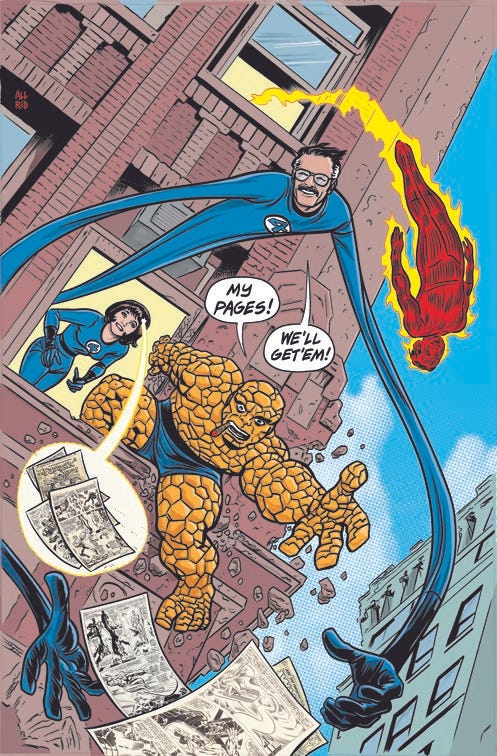
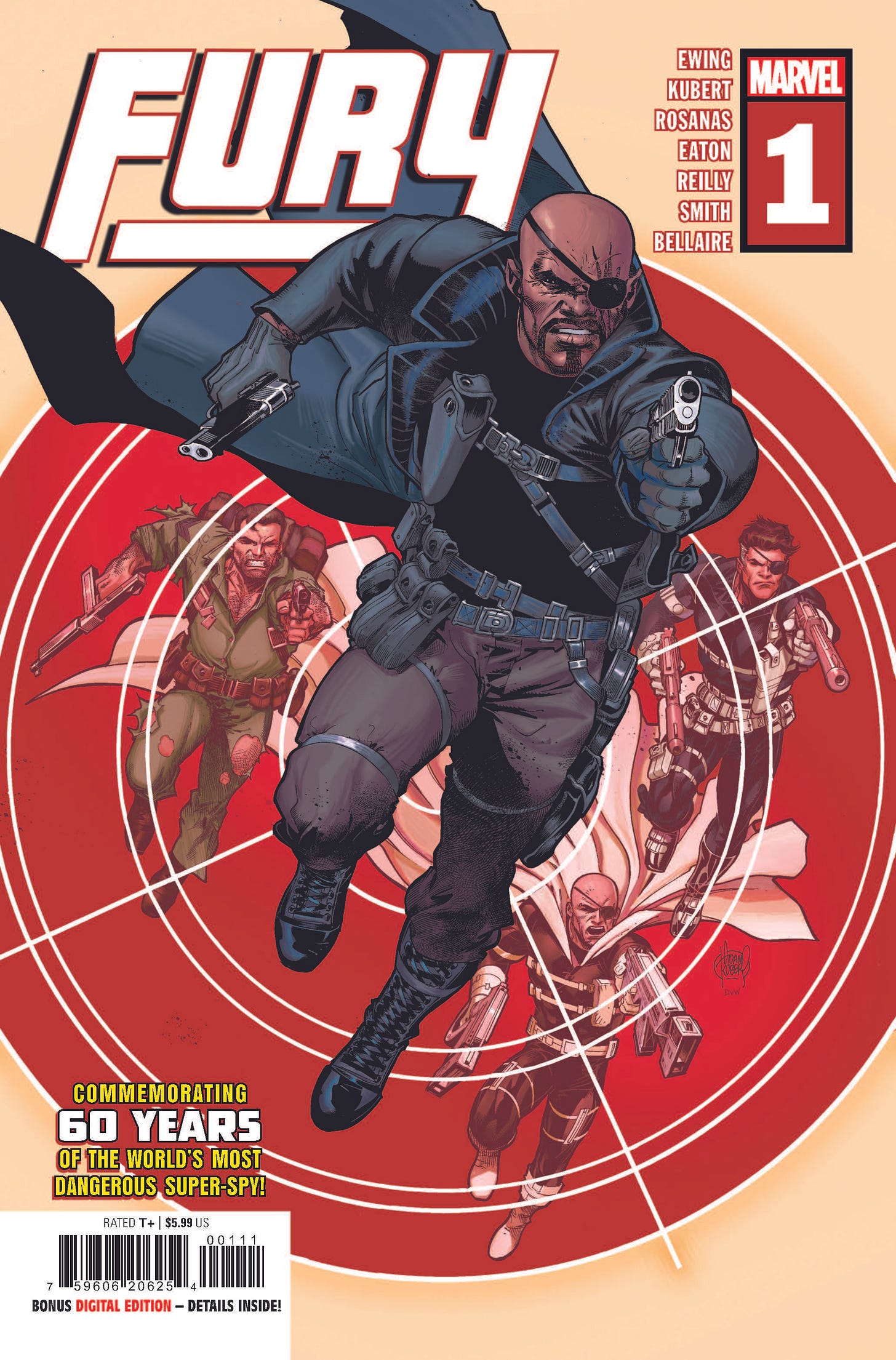
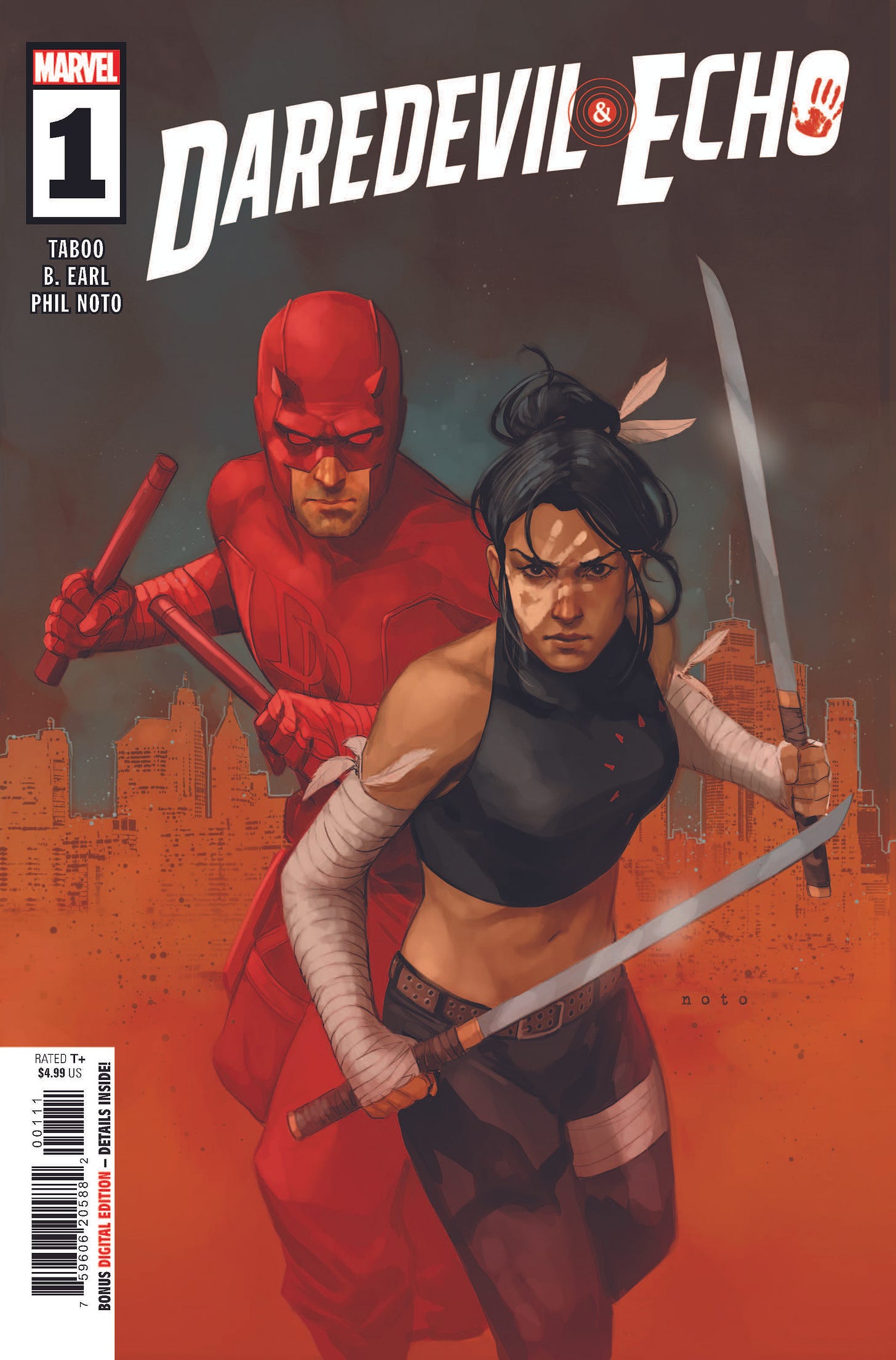
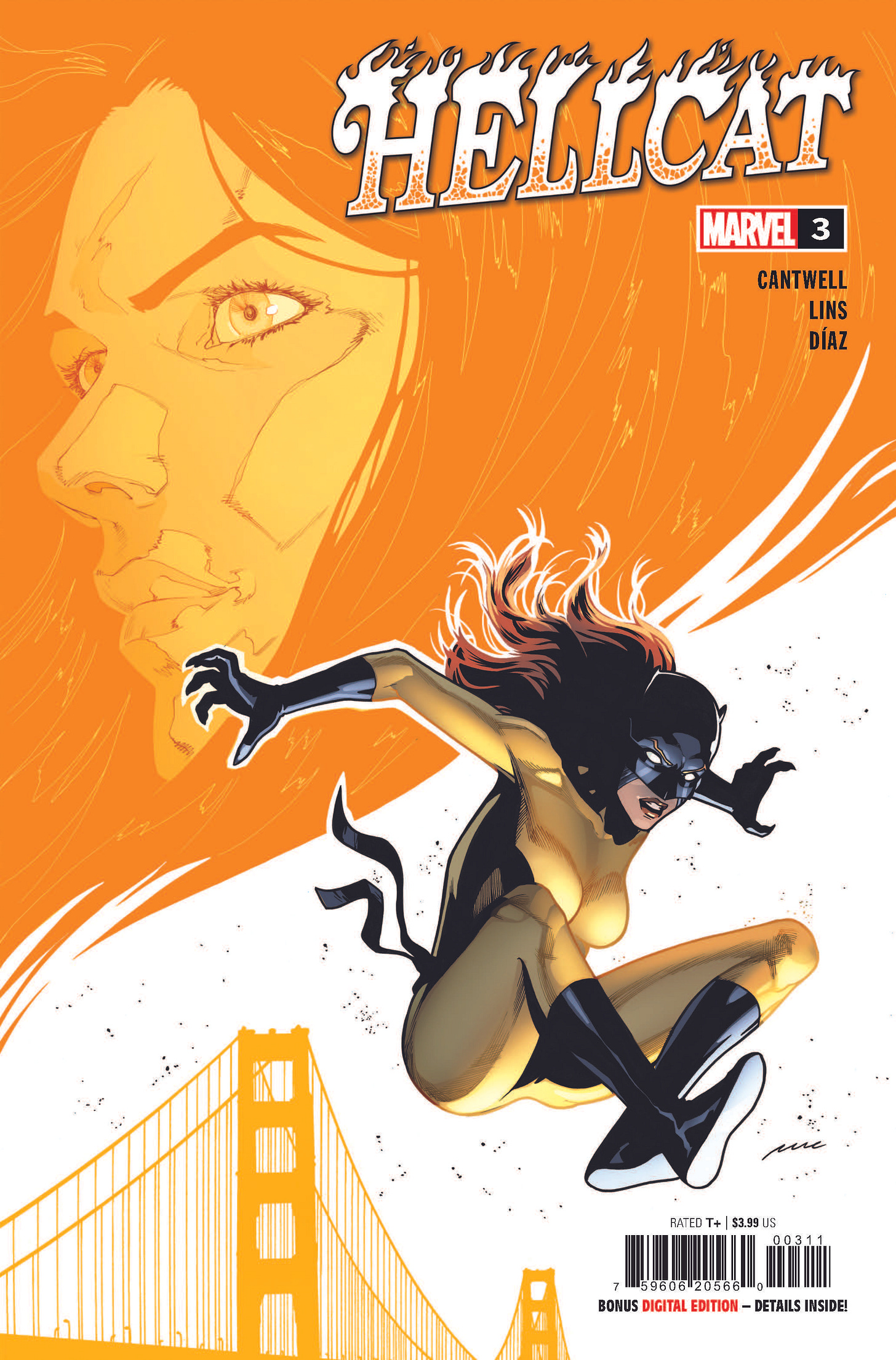

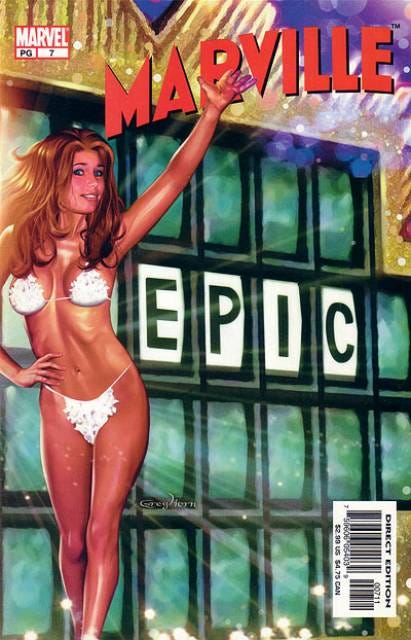
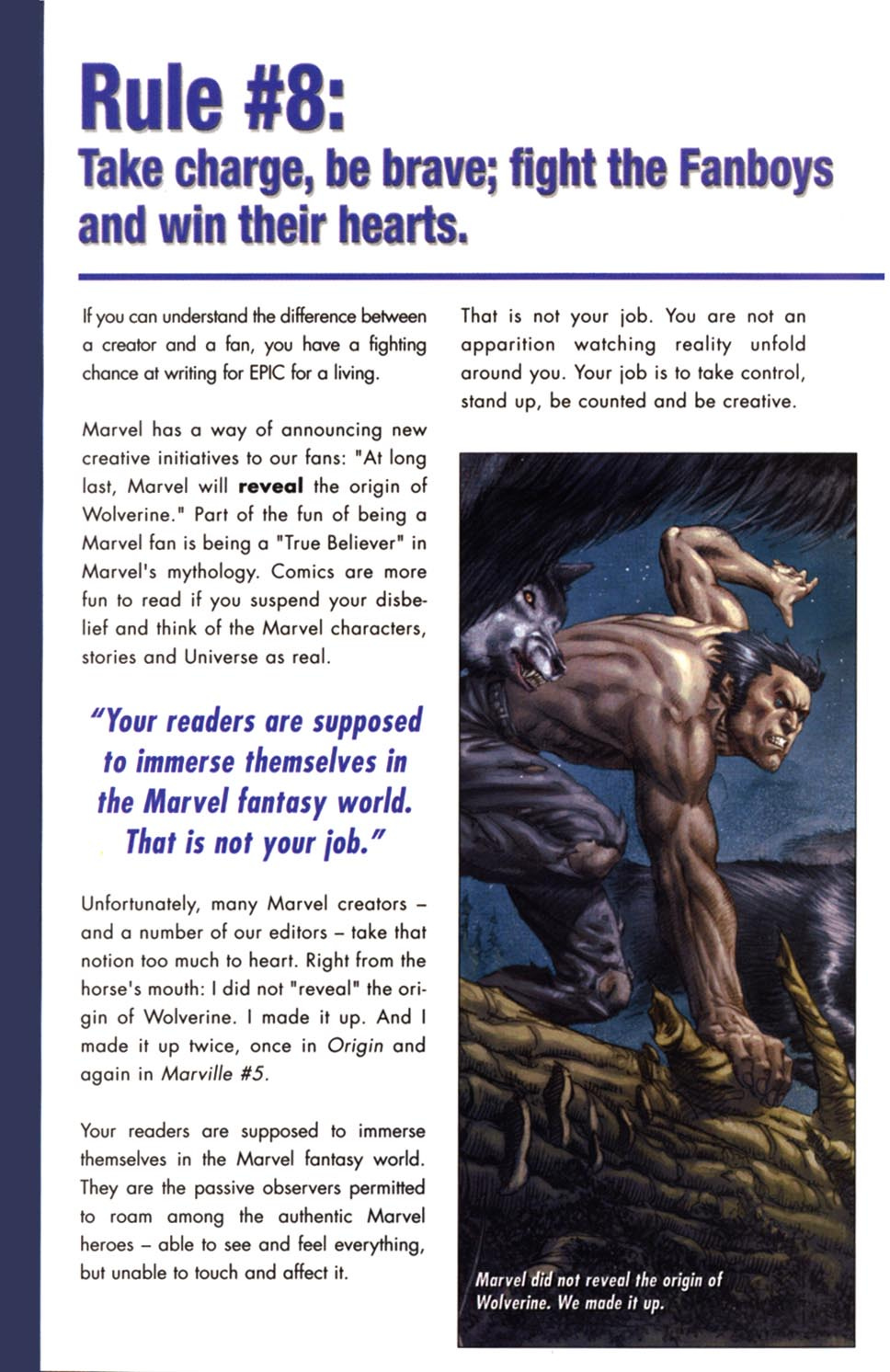

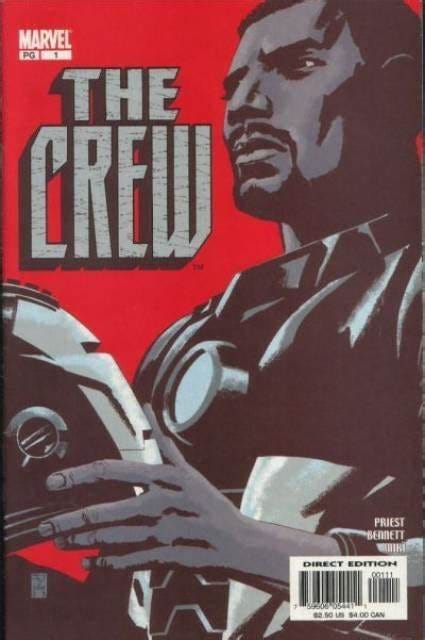
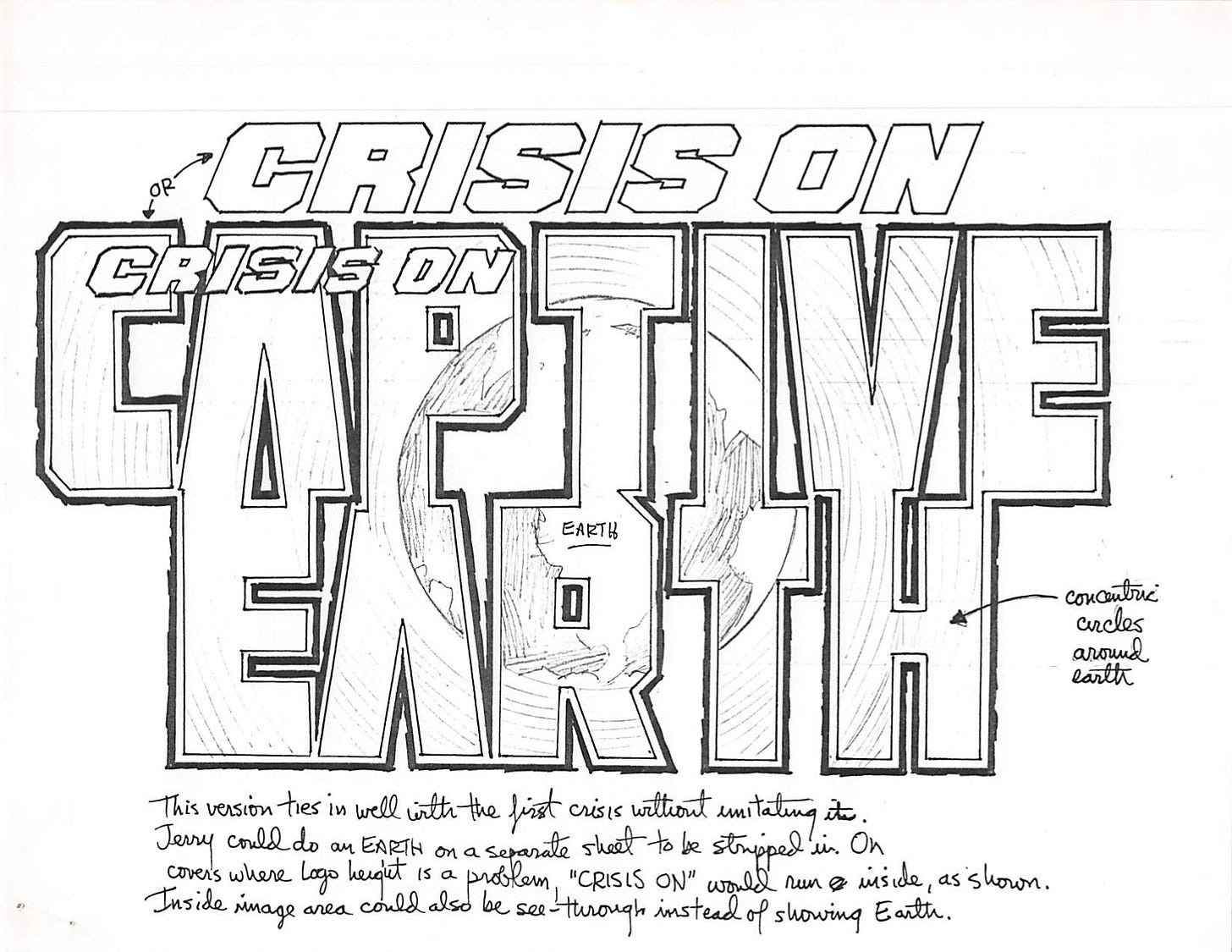
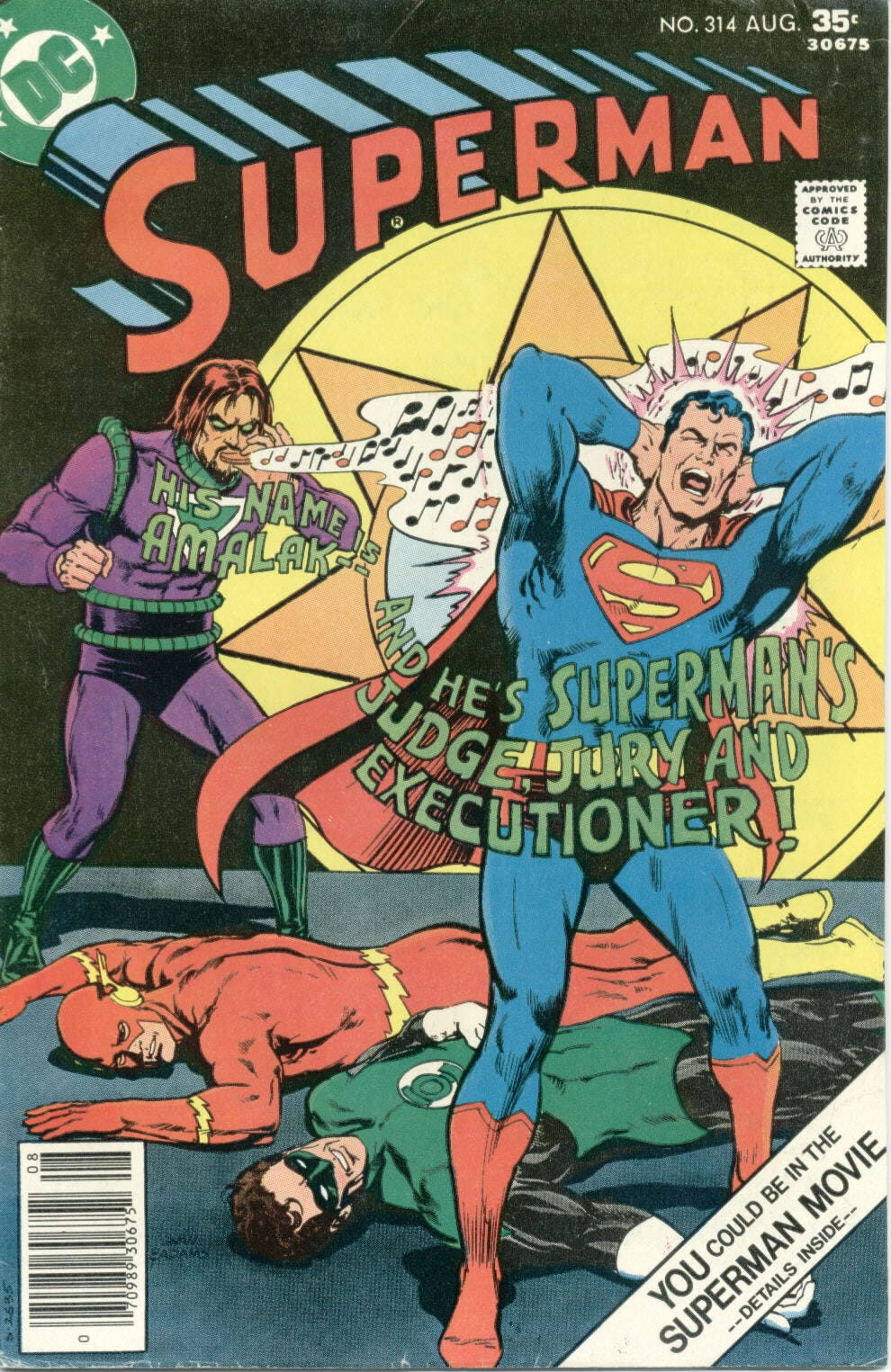
I loved The Crew, so thanks for giving it a spin, even if it did seem to last for weeks.
Thanks for all the work you do to share some of your insight and behind the scenes experience with fans!
I’ve been really enjoying Ryan North’s FF run, and issue #7 (or 700) was another great issue. I happened to come across a short story Ryan wrote featuring the Fantastix from a “Fantastic Four: Negative Zone” special issue (with art by Steve Uy.) It too was “smart and clever and fun”, as you recently described Ryan’s writing. I was curious if more planned with those characters for the Dan Slott run of the time? They seemed to kind of go away quickly. Not sure there was all that much to do with them (they had a bit of Great Lakes Avengers feel about them) and Ryan’s story could actually have been an ending of sorts, but was just curious. Also, did that short story at all make you think of Ryan when Dan decided he was ready to leave the book? Thanks for all you do!